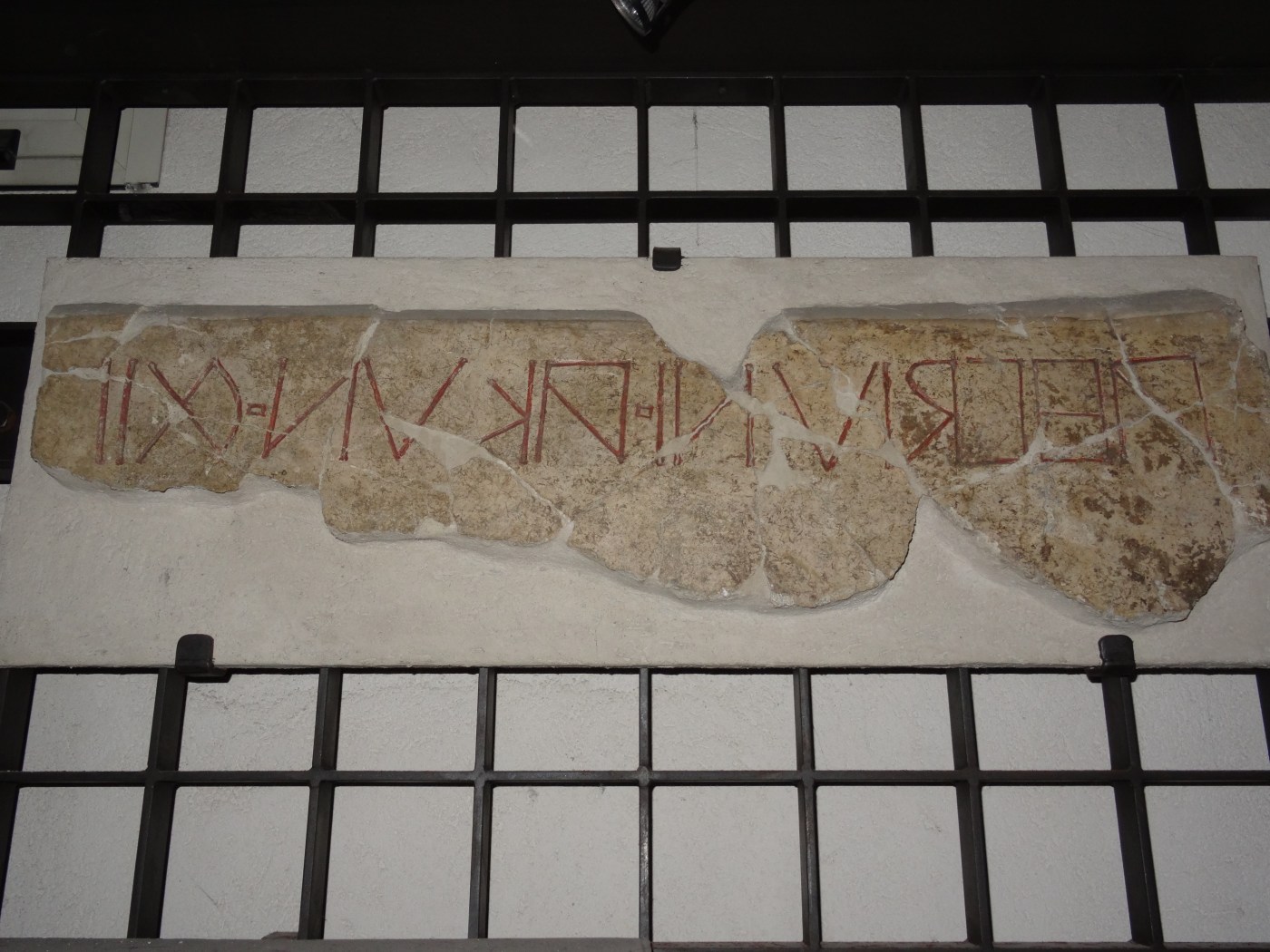ahvdiú. ni. akun. CXII
Ahvdio daughter of Ni. 112 years
Oscan inscription on plaster. Teanum Sidicinum, c. 200 BC. Imagines Italicae: Teanum Sidicinum 24; Sabellische Texte: Po 51.
People have struggled with Ahvdio’s gravestone. On the one hand, the Roman numerals at the end of the inscription (on the left-hand-side of the picture) look quite unambiguously like CXII, the number 112. But could a woman really have lived that long in the third century BC? Were people at this time using these numerals in an unusual way? Is the C (the 100) at the beginning of the number not a C at all?
Opinions remain split, but personally I am completely behind the idea that this gravestone honours a 112-year-old woman.
Firstly, gravestones claiming implausibly old ages exist in all pre-modern societies, and in some more modern ones too. In Britain, the most famous example is Old Tom Parr, whose age at death (152 years 9 months) is recorded on his gravestone in Westminster Abbey (and, wonderfully, this age is not called into question on the Abbey’s website). Before compulsory birth registration and birth certificates, many people had only a vague sense of their own and other’s ages, hence all the suspiciously round numbers on ancient gravestones. And in a society where the majority of people died before old age, a woman who reached, say, 90 would have had very few contemporaries who could correct her or verify her age. Once you are the oldest person in third-century Teanum Sidicinum, you can probably call yourself 100 or 105 or 110 without anyone disbelieving you.
Secondly, gravestones are not all that common in this part of ancient Italy, particularly gravestones to women. The majority of the examples of gravestones in the Oscan language are either later, around 100 BC onwards, or were put up to elite men or particularly important elite women. The reason for honouring a woman with a gravestone is almost always stated, usually with the word “priestess” after the name. In this case, there is no suggestion that Ahvdio was a priestess – the only justification for her monument we are given is her age. Ages are not common on gravestones of this period either – in fact I’m not sure we have another example of a gravestone with an age written in Oscan at all.
All of which suggests to me that Ahvdio really was a 112-year-old woman (at least in her own mind and in the minds of her fellow citizens), and that her exceptional old age made her significant enough to honour with a special tomb monument – just as we did for Tom Parr many centuries later.



Leave a comment